Birmingham, the second-largest city in England, might be better known for its wool industry and canals but it has a wealth of historic castles and manor houses within easy reach of the city centre, several of which are a short 30-minute journey away.
So, which of these must-see castles near Birmingham will you go and visit first and will it be the Norman, Tudor, or Elizabethan eras that incite your curiosity to learn more about England’s history and spur you on to visit more of its incredible castles?!
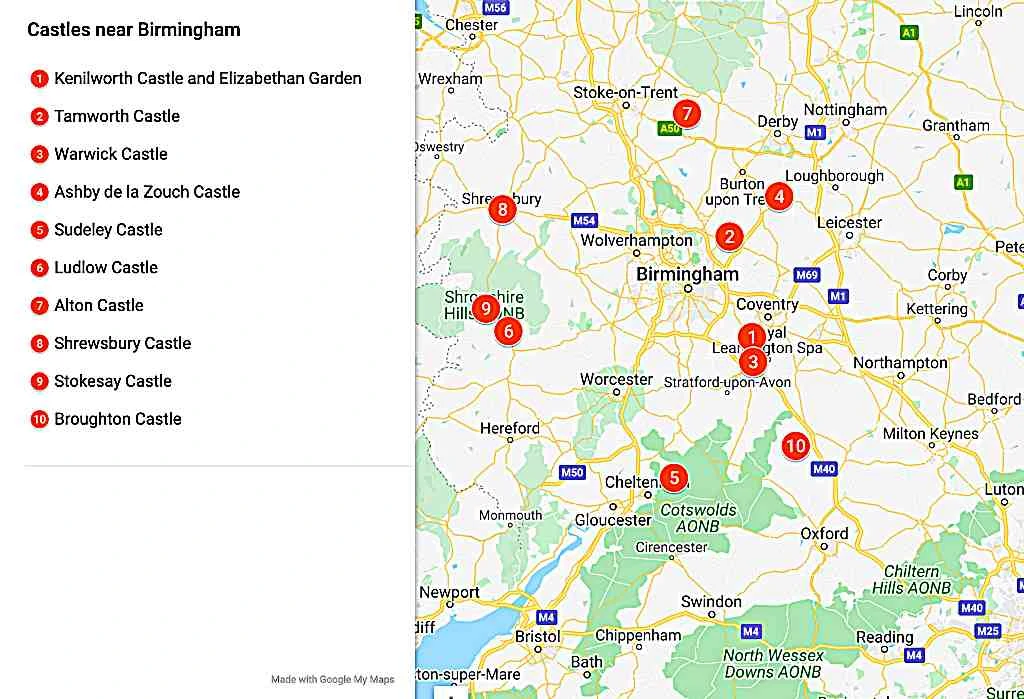
10 Castles To Visit Near Birmingham
1. Kenilworth Castle and Elizabethan Garden
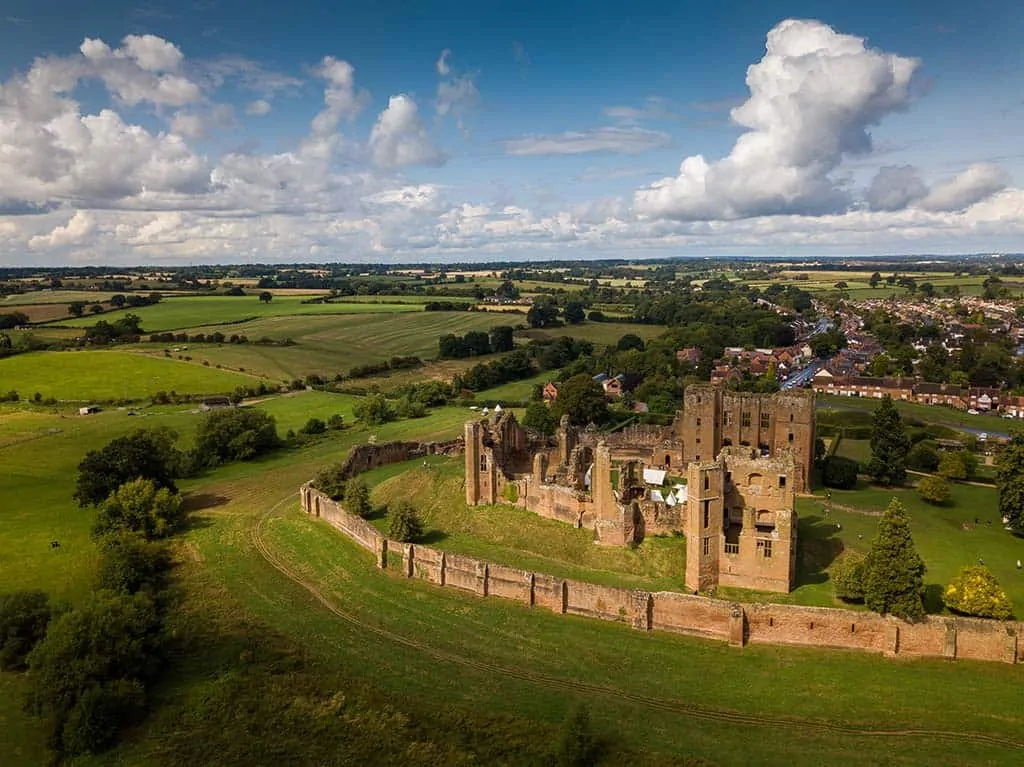
This 900- year -old castle, one of the closest castles to Birmingham, was built 50 years after the Norman Conquest and started out as a Medieval fortress, later becoming the home of Robert Dudley who had a tower built especially for Elizabeth I.
As the largest castle ruin in England, visitors can truly step back in time as they see the Norman keep, the Tudor gatehouse, the ruins of the great hall, and the stunning Elizabethan formal landscaped gardens which have been recreated in all their glory.
Where: Warwickshire
When: 13th century
Style: Norman
Open for visit: Yes. Check here for more information.
2. Tamworth Castle
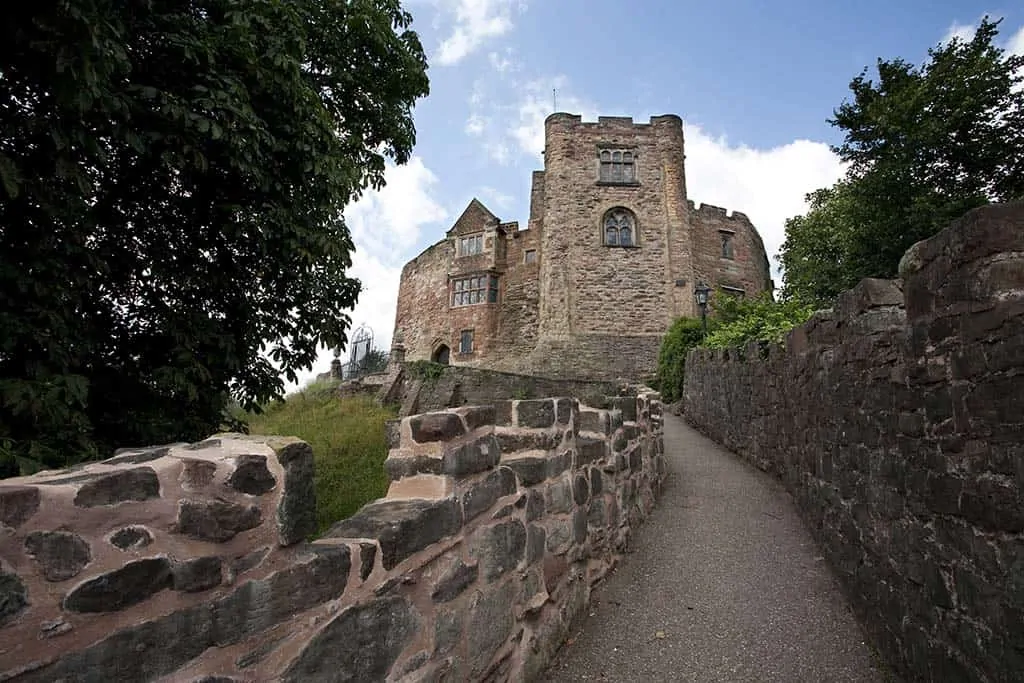
Built for William the Conqueror in approximately 1070 on the corner of a pre-existing fortified Saxon burg, Tamworth Castle went on to be owned by the Lords of Marmion for 200 years before becoming the family home of the Freville’s.
Visited by King Henry I, King Henry II, and William Beckett, visitors to the castle today can explore 900 years of history by visiting 15 rooms open to the public as well as the expansive courtyards and grounds allowing glimpses of Saxon, Norman, Tudor, Stuart, Georgian, and Victorian history.
Where: Tamworth, Staffordshire
When: 11th century
Style: Norman
Open for visit: Yes, check here for more information.
You might also like: Best castles in Staffordshire.
3. Warwick Castle
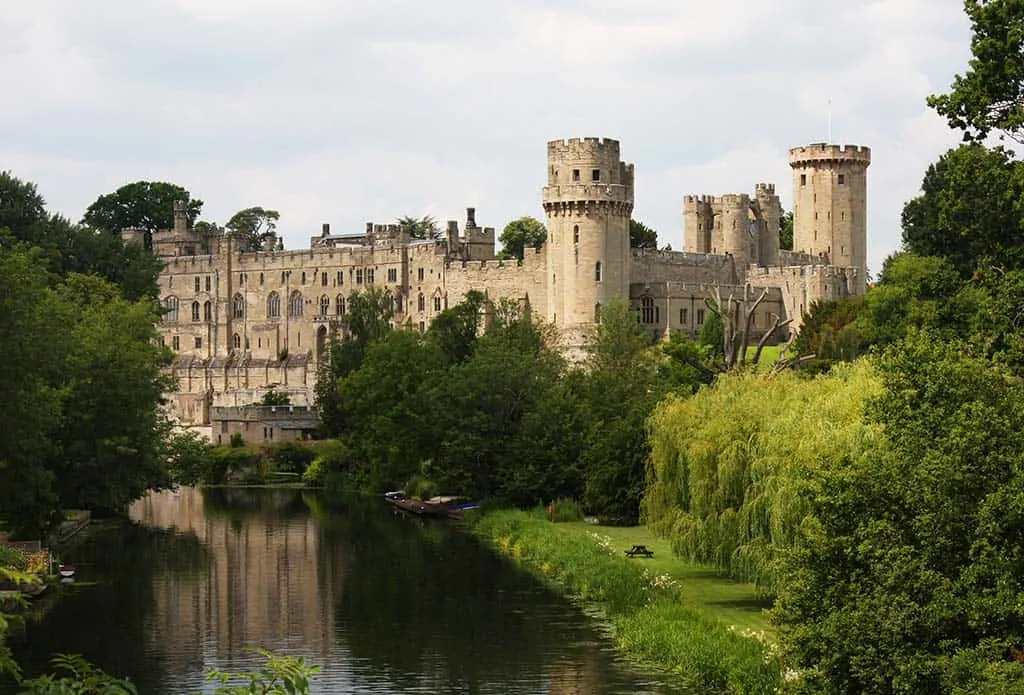
Warwick Castle has a long and rich history being first a Roman fort, then an Anglo-Saxon burh before William the Conqueror built the first motte and bailey castle here in 1086 from earth and timber before it was rebuilt in stone.
This castle near Birmingham played a central role in the overthrow of Edward II and the Wars of the Roses before getting caught up in the Civil War. Today, visitors can explore the 1,000 years of history at the castle by climbing the ramparts, looking out from the towers, and visiting the dungeons.
Where: Warwickshire
When: 12th century
Style: Medieval
Open for visit: Yes. Check here for more information.
4. Ashby de la Zouch Castle
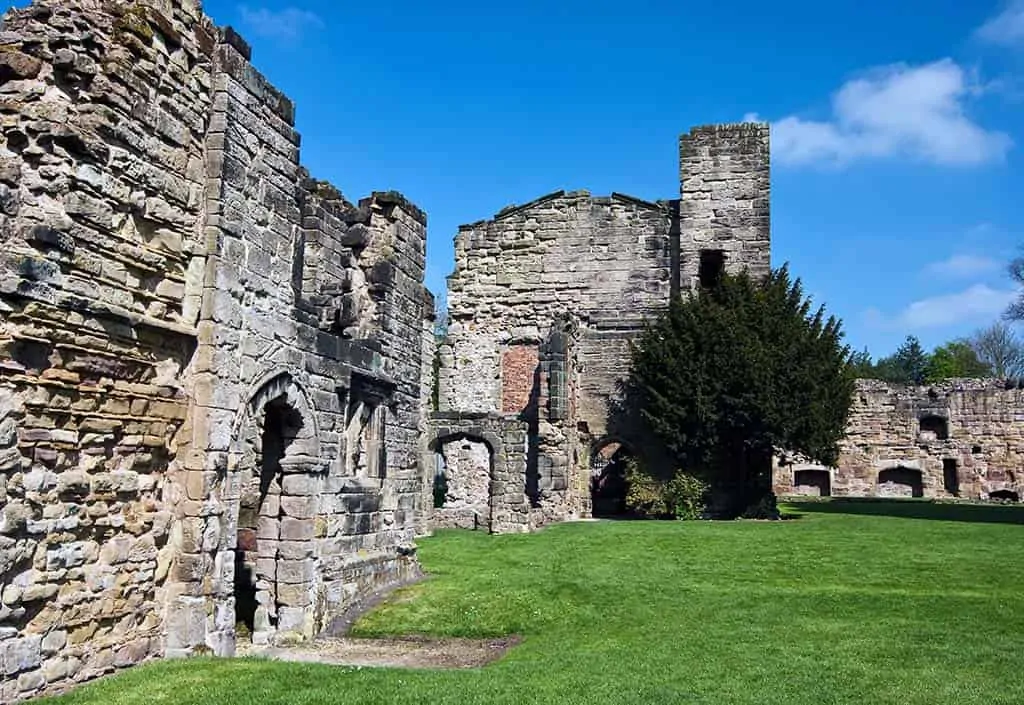
Initially a 12th– century manor house, it wasn’t until the 15th century that Lord William Hastings (one of the most powerful political men in the country at that time) began to expand the property so that it reached castle status, at the same time creating a 3,000-acre park for hunting.
After his death midway through development, the castle was completed and became the home of his descendants, one of whom was Hastings’ Grandson George who became the 1st Earl of Huntingdon under Henry VIII.
Playing a vital role in the Civil War, today the castle near Birmingham stands in ruin though visitors can still climb the towers and walk the underground passage that runs between the tower and the kitchen.
Where: Ashby-de-la-Zouch, Leicestershire
When: 15th century
Style: Late Medieval
Open for visit: Yes. Check here for more information.
5. Sudeley Castle
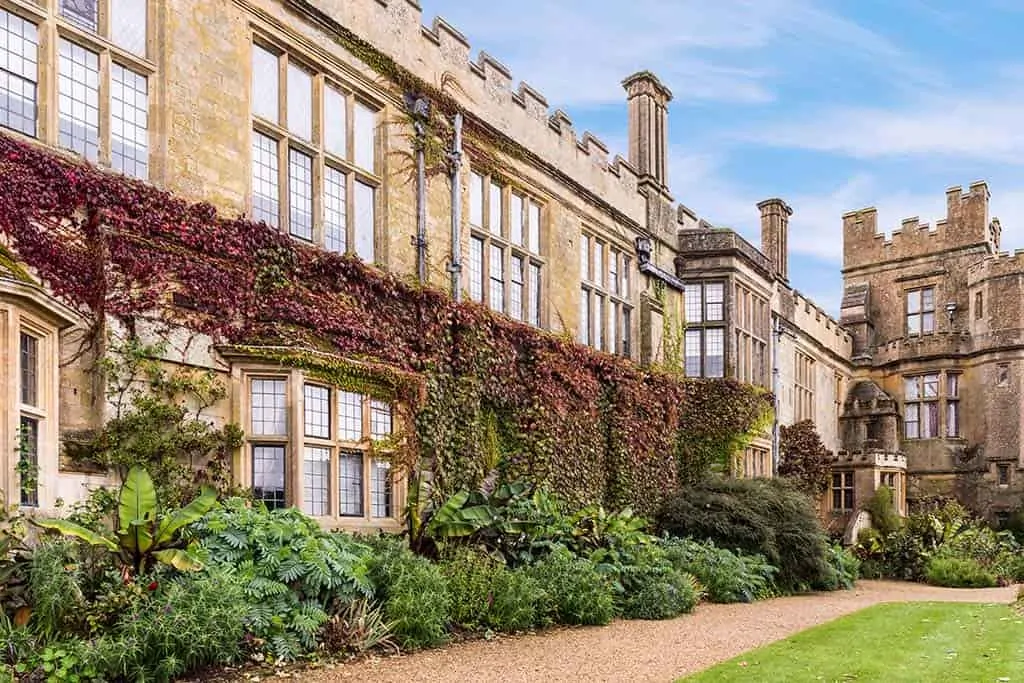
Standing on the site of an older 12th– century castle, the castle seen today dates back to 1442 and is one of the finest Tudor Castles in the country also boasting stunning rose gardens.
The former home and final resting place of Queen Katherine Parr, the last wife of King Henry VIII, this Royal castle also has connections with Anne Boleyn, Lady Jane Grey, Elizabeth I, Richard III, and King Charles I, the exhibitions at Sudeley Castle taking visitors on a whirlwind ride back through time as they learn more about this historic castle and the only wife who outlived Henry VIII.
Where: Winchcombe, Gloucestershire
When: 15th century
Style: Medieval / Elizabethan
Open for visit: Yes, check here for more information.
Check out more castles to visit in Gloucestershire.
6. Ludlow Castle

One of the first motte and bailey castles to be built in stone after the Norman conquest, this Welsh Border stronghold was founded by Walter de Lacy in approximately 1085. Extensively remodelled throughout the Middle Ages after it was attacked by Edward II and sacked by the Lancastrians during the Wars of the Roses, the castle became the childhood home of Prince Edwards actually serving as a Royal castle for 350 years.
Today Ludlow Castle stands in ruin but visitors can still see the remains of the Outer and Inner Bailey, the Keep, Great Chamber, and Norman chapel as they uncover the history of the medieval society from the Normans through to the Tudors.
Where: Ludlow, Shropshire
When: 11th century
Style: Medieval
Open for visit: Yes, check here for more information.
7. Alton Castle
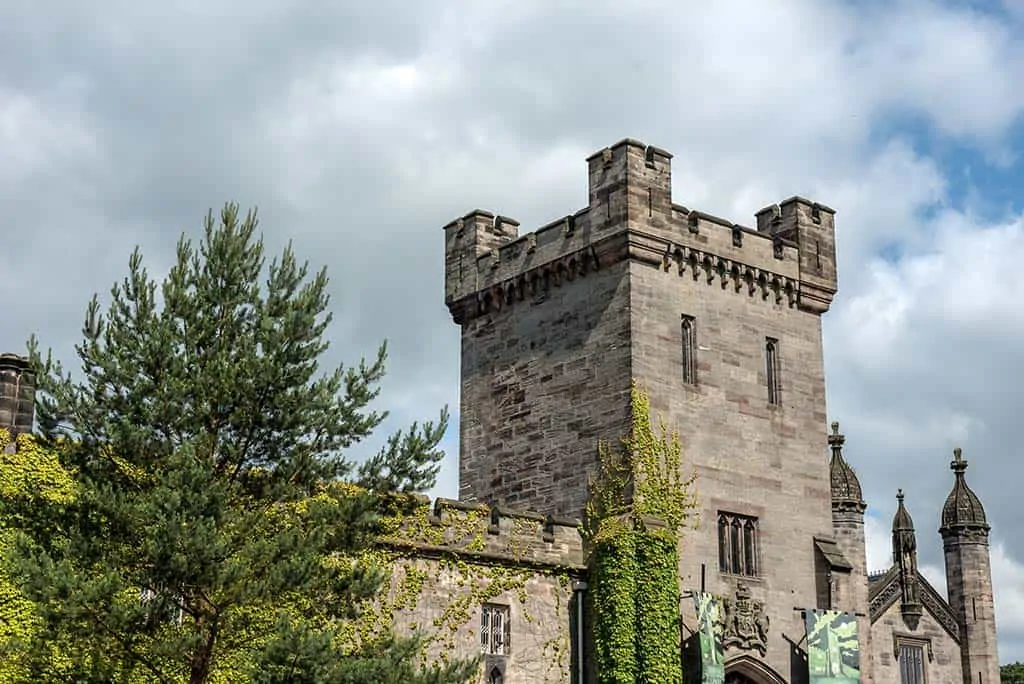
Built on a Saxon fortification overlooking the Churney Valley, the original Alton Castle dates back to the 12th century when it was founded by Bertram de Verdon.
The castle was destroyed after the Civil War with only portions of the old walls and the gatehouse remaining, a new mock castle being built next to the remains of the old castle in the 19th century. Today, the newer Alton Castle House is a youth retreat centre and wedding venue.
Where: Alton, Staffordshire
When: 12th / 18th century
Style: Gothic Revival
Open for visit: No, check here for information
8. Shrewsbury Castle

Unique in style due to its red sandstone, this castle is located directly above Shrewsbury train station beside the River Severn and houses the Shropshire Regimental Museum.
Originally a Saxon fortification made from timber, Shrewsbury Castle was built in red sandstone by the Normans in 1070 and later, after being captured by King Stephen and held by William FitzAlan for Empress Maud, was rebuilt and strengthened in 1300 under the rule of Edward I, this Edwardian style being restored to give us the present building as we see it today.
Where: Shrewsbury, Shropshire
When: 11th century
Style: Edwardian
Open for visit: Yes. Check here for more information.
9. Stokesay Castle

One of the finest fortified manor houses that still survive in England today, Stokesay Castle was built around 1285 as a place of business by Laurence of Ludlow, a wool merchant and money-lender who later became a key financial adviser to Edward I.
The so-called castle, which was actually a place of work and family home rather than a stronghold, stayed in the Ludlow family until 1498 but was partially destroyed after it was captured in the Civil War, later being restored as a country home which was lived in until 1992.
Where: Stokesay, Shropshire
When: 13th / 17th century
Style: Medieval
Open for visit: Yes. Check here for more information.
10. Broughton Castle
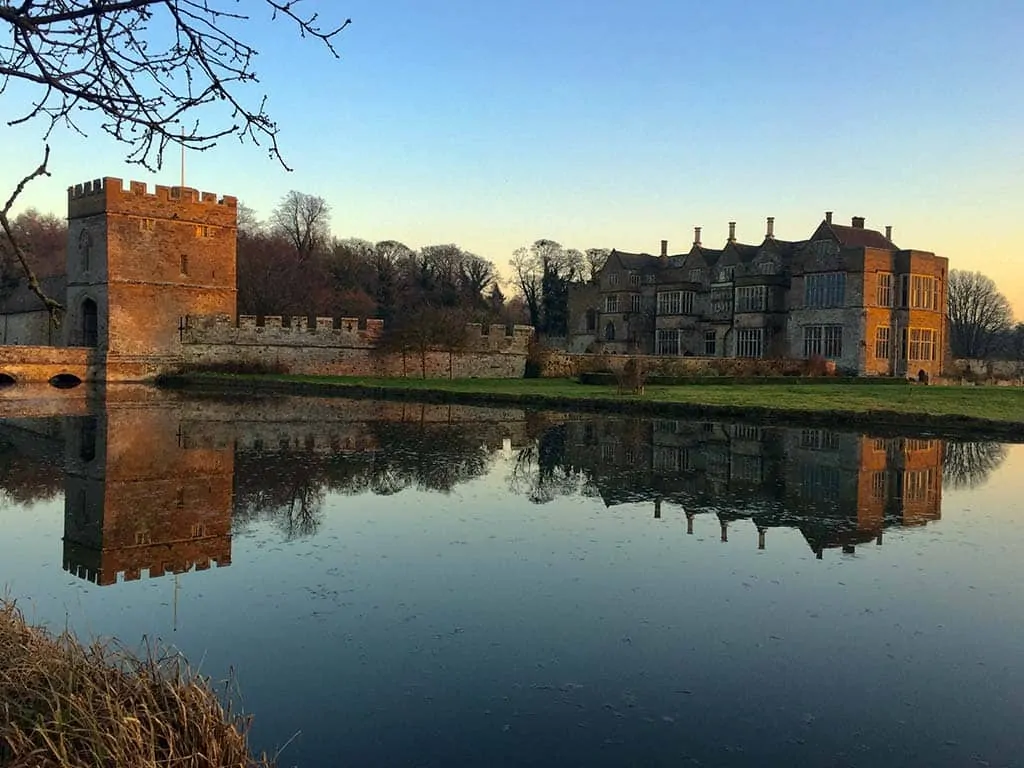
Located on an artificial island surrounded by farmland and a wide moat, Broughton Castle is not a true castle but instead an idyllic fortified manor house.
Built by Sir John de Broughton in 1300 with the gatehouse added later, Broughton Castle was besieged during the Battle of Edgehill in 1642 due to it being a centre of opposition to Charles I.
It has been home to the Barons Saye and Sele since 1447, the 21st Lord and Lady still living at Broughton Castle today.
Where: Banbury, Oxfordshire
When: 14th century
Style: Medieval
Open for visit: Yes, check here for more information.
